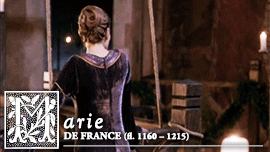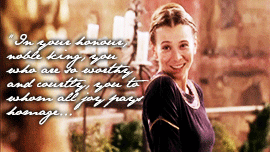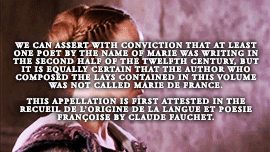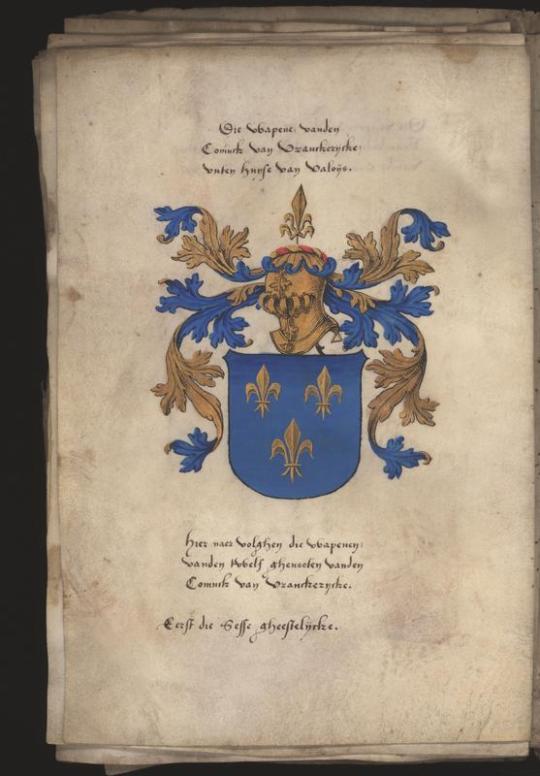#county of flanders
Text

Princess Marie of Hohenzollern-Sigmaringen (1845-1912), later Countess of Flanders.
#kingdom of belgium#hohenzollern sigmaringen#german aristocracy#countess of flanders#county of flanders#royalty
3 notes
·
View notes
Text

Charles V by Albrecht de Vriendt.
#kingdom of belgium#duchy of brabant#haus habsburg#full length portrait#county of flanders#charles v#holy roman emperor#heiliges römisches reich#holy roman empire#austria#maison de habsbourg#albrecht de vriendt
7 notes
·
View notes
Text
Valentino's Pizzeria and Restaurant - Sutton Plaza Shopping Center on Route 206 in Flanders, NJ

I happened upon Valentino's when I was taking some backroads to get home from work one day. I saw a lot of reviews online mentioning how good the buffalo chicken slice was so of course I got one. All of the other options looked pretty meh anyway, so it was a no brainer. Thankfully, the buffalo did NOT disappoint. The pieces of chicken were HUGE and the gobs of bleu cheese were the perfect complimentary ratio. Wasn't crazy about the crust though. It was a pseudo deep dish that was just too crackly and chewy for my tastes. By the end my jaw hurt from all the chewing. My only other gripe was the steep $4.80 the slice cost. It was good, but I don't know about THAT good. I can't say I've had any other pizza from Flanders, but if you're local and need a slice, this place just might be the answer!


#Valentino's#Valentino's Pizza#Valentino's Pizzeria#Valentino's Pizzeria and Restaurant#Flanders#NJ#New Jersey#Morris County#pizza#pizza slice#buffalo chicken#pizzeria#specialty slice#toppings#I love pizza#pizza rocks#pizza rules#za perfection#foodporn#food porn#that's so cheezy!
2 notes
·
View notes
Video
Stone Creations of Long Island by Paul Saladino
Via Flickr:
Deer Park, N.Y 11729 Stone Creations of Long Island Pavers and Masonry specializes in masonry design and outdoor living, serving communities all across Long Island in all aspects of home improvement and repair. From custom brickwork and pavers to asphalt and concrete, Stone Creations of Long Island provides free estimates at your home or business seven days a week. With experienced employees, and a knowledgeable staff, Stone Creations of Long Island knows your home is your greatest investment and choosing the right masonry team to protect and enhance that investment is important. For any inquiries, we look forward to your questions and helping on your next home improvement or commercial project of any scale. Paul Saladino Office (631) 678-6896 Mobile (631) 678-2710 Visit Our Website www.stonecreationsoflongisland.net See our work on You Tube www.youtube.com/user/stonecreationsLI/videos Follow us on Twitter www.twitter.com/stone_creations Check us out on Pinterest www.pinterest.com/stonecreations See Our Work On Houzz www.houzz.com/pro/stonecreationsoflongisland Follow our Updates on www.stonecreationslongisland.tumblr.com Follow us on Wordpress www.stonecreationsoflongislandinc.wordpress.com Like us on Facebook www.facebook.com/stonecreationsoflongisland
#Argyle Lake#Long Island#Hamptons Masonry#Hecksher State Park#Huntington#Hampton Bays Masonry 11946#Hampton Bays NY 11946#Heavy Duty Trucks#Jamesport NY 11947#Jamesport NY Masonry 11948#Saint James NY 11780#Rocky Point NY 11778#longislandpavers#LongIslandBrickwork#Long Island Home Improvements#longislandmasonry#www.stonecreationsoflongisland.net#West Islip NY 11795#Deer Park NY 11729#Dix Hills NY 11746#DeerParkConcrete#Flanders NY 11901#Fire Island Lighthouse#Firepit#Suffolk County Pavers#Masonry Near Me#Massapequa NY 11762#Stone Creations LI#Stone Creations Outdoor Living#Stone Creations of Long Island Masonry
1 note
·
View note
Photo

William the Conqueror, Duke of Normandy & King of England (1066-1087)
Map published in “L’Histoire” n°424 (June 2016); included in the “World Historical Atlas” by Christian Grataloup, Les Arènes/L’Histoire, 2019
by cartesdhistoire
In 1066, the victory at Hastings linked England to the continent for several centuries, despite the difficult conquest of the North and Cornwall. In about ten years, William extended Norman power from the Scottish marches to Maine. He stitched the territory with castles, took control of the administration and avoided the creation of vast vassal fiefdoms, apart from the counties facing Wales and Scotland. The duke-king, upon his death in 1087, was in a position to compete with the king of France.
1035: On the death of his father, William becomes Duke of Normandy at the age of 8.
1047: Battle of Val-ès-Dunes. William, allied with the French king Henry I, defeats a coalition of rebel Norman barons.
1051: Edward the Confessor, King of England, asks William to succeed him.
1052: Breakdown of the alliance between William and Henry I.
Around 1053: Marriage of William and Mathilde of Flanders.
1063: Harold is taken prisoner by Gui de Ponthieu. William had him released and demanded that he undertake to recognize him as king of England upon Edward's death.
1066, October 14: Battle of Hastings.
1066, December 25: William crowned king of England.
1069-1070: Rebellion in northern England and its suppression.
1083: Death of Queen Mathilde. She is buried in the Abbaye aux Dames de Caen, which she founded.
1085-1086: Census for the completion of the Domesday Book.
1087: Death of William. He is buried in the Men's Abbey of Caen, which he founded. His eldest son, Robert Courteheuse, succeeded him as Duke of Normandy; his third son William II Roux becomes king of England.
1204: Philippe Auguste, king of France, defeats John Lackland and conquers Normandy. It is the end of the cross-Channel empire created by William.
98 notes
·
View notes
Text










Medieval Women Week || Favorite woman writer
↬ Marie de France
Who was this versatile author, the first woman of her times to have written successfully in the vernacular? She was definitely not Marie de Champagne, daughter of Eleanor of Aquitaine and patroness of Chrétien de Troyes, as Winkler suggested. A tempting, but by no means fully convincing, identification is with Marie, abbess of Shaftesbury in Dorset, illegitimate daughter of Geoffrey Plantagenet and half-sister to Henry II. … A claim has been made, albeit somewhat thin, for Mary, abbess of Reading. This abbey was well known as a centre of literary activity and had in its possession the Harley manuscript containing, as we have seen, both the Fables and the Lais. There is no clear-cut reason why either work could not have been written by an abbess or a nun, and there is some slight evidence of experience of monastic life in Le Fresne, Yonec and Eliduc. But the prominence of the motif of adultery in the Lais (see also fables 44 and 45), Marie’s attitude towards the dissolution of marriage in Le Fresne and Eliduc, and her evident interest in the chivalric life suggest that these love poems were not written by someone steeped in ecclesiastical ideology.
… Marie de France was certainly an educated lady of good family, who knew Latin well enough to have contemplated translating a Latin work into French (Lais, Prologue, vv. 28–32) and to have done so in the case of the Espurgatoire. She was obviously a good linguist and acquired a sound knowledge of English before translating the fables. She was also fully conversant with the life and aspirations of the nobility of her time. Her education could well have been obtained in a convent and her knowledge of court life from her upbringing and personal experiences in England. Was she Marie, the eighth child of Waleran de Meulan (also called Waleran de Beaumont), a member of one of the greatest of the Norman houses? Waleran’s fief was in the French Vexin, which would tally with Marie’s statement that she comes from France and explain her evident local knowledge of the town of Pitres in the Norman Vexin… Marie de Meulan married Hugh Talbot, baron of Cleuville, owner of lands in Herefordshire and Buckinghamshire, as well as in Normandy, and a member of a family prominent in several English counties including Devonshire, Gloucestershire and Kent. Marie’s father is an interesting figure – a loyal and courageous soldier, but also a well-educated man who may have written Latin verse. Moreover, several of the manuscripts of the Historia Regum Britanniae of Geoffrey of Monmouth are dedicated to him. It is tempting to think that his daughter may have known William of Gloucester, a possible Count William, as his father was also one of Geoffrey’s dedicatees. Marie de Meulan may, however, have been too young to be Marie de France, as her birth seems to date from the 1140s, perhaps as late as 1150.
The most recent identification has been as Marie, countess of Boulogne after 1154, daughter of Stephen of Blois (King of England, 1135–54) and of Matilda of Boulogne. Educated in a convent, Marie de Boulogne became abbess of Romsey in Hampshire, but was removed from her convent by Henry II, who wanted to keep Boulogne in his sway. She was married off to Matthew of Flanders and thus became the sister-in-law of Hervé II, son of Guiomar of Léon... Eventually, at some time between 1168 and 1180, Marie de Boulogne returned to a convent, perhaps that of Sainte Austreberthe at Montreuil-sur-Mer in her own county. Her Count William could have been William of Mandeville, a crusade companion of Philip of Flanders, her husband’s brother. The ‘noble king’ would probably have been the Young King, as Philip and Matthew, originally supporters of Henry II, changed sides in 1173. Marie herself may have already been a supporter of the Young King, as in 1168 she sent Louis clandestine information about the secret negotiations between Henry and the Emperor Frederick.
— The Lais of Marie de France translated with an introduction by Glyn S. Burgess and Keith Busby
#medievalwomenweek#marie de france#english history#french history#european history#women's history#medieval#history#nanshe's graphics
30 notes
·
View notes
Photo





"The twelve virtues of nobility", followed by an armorial. Folio (320 x 215 mm), [24]-[2 bl.] ff. on parchment, in pen and black ink, coats of arms with watercolor. Binding: waste from a liturgical manuscript in Latin. Text: calligraphic French verse, celebrating the virtues of the nobleman: nobility, faith, beauty, honor, righteousness, prowess, love, courtesy, diligence, neatness, generosity and sobriety. The armorial is made up of 30 coats of arms with their stamps, captioned in Dutch. The first 10, in large format, relate to large sovereign houses (Holy Empire, Bohemia, Brandenburg, Valois, Saxony, etc.), the other 20, in smaller format, relate in particular to the former Netherlands (Duchy of Brabant, counties of Flanders, Holland, Zeeland, Hainaut, Namur...) and the royal houses of Valois, Aragon, Bohemia and Portugal.
(via "Les douze vertus de la noblesse", with an armo...)
#heraldry#nobility#medieval manuscripts#manuscripts#illumination#coats of arms#french#poetry#muspeccoll#mizzou#university of missouri#libraries#private collection#fb#kelli h
98 notes
·
View notes
Text
More musings on Dutch/Low Countries breeds
So in this post I mused about Dutch history, strategy, and dragon breeds. I had some more thoughts about them, so here we go:
Fryske Grutskens have some aquatic adaptations. They are squarely in the middleweight category, and they are white and blue, with red splotches. Splotches in the shape of pompeblêden are especially prized (like the Frysian flag)
Brabants Blauwtje are on the big side for a middleweight, and often straddle the line between middle and heavy (18 tons), despite "blauwtje" implying they are small blue dragons. Their colour varies along pretty much all shades of blue, though the darker blues are prized highly.
Zwarte van Gelre actually tend to be charcoal grey at best, rather than black. A fairly standard middleweight.
The Flemish heavyweight has two names. It has an official French name, bestowed on it by the Counts of Flanders, and everyone else uses a much more plain Flemish name.
There is also a lightweight Flemish breed, which definitely only has a Flemish name. Specifically, Rode Duivels.
Hollands Glorie is the coastal breed favoured by the County of Holland. Again, it has some aquatic adaptations (don't ask me what), and is raised to eat a lot of fish. These are the most commonly seen by most people. They aren't more common, but most of the trade is concentrated in Holland (and Flanders), so these are the dragons most commonly used by traders. Probably on the light-to-medium weight range for middleweights. The smaller among them can probably be taken along on a ship that is not a dragon transport, though only barely.
The poor soils in the north-east of the country are enriched with dragon manure instead of purely sheep manure, but they are still fairly poor. I think they likely wouldn't be able to feed more than a lightweight (a very belligerent one though). They are purple, like heather, and they can sort of hover, thanks to the boggy lands they evolved in.
Utrecht, a prince-bishopric, has a brightly coloured breed. Purplish red, for the church. Likely some Italian influences, since the pope would probably have a representative there.
8 notes
·
View notes
Text
FOR WANT OF A NAIL
@baldwin-montclair @adowobsessed @sylverdeclermont @nicki-mac-me @thereadersmuse @kynthiamoon @wheresthesunshinesblog @adowbaldwin @beautifulsoulsublime @lady-lazarus-declermont @adarafaelbarba-blog @dogblessyoutascha
Part Fourty-Eight
Summary: Baldwin Montclair had a string of ex girlfriends, a single child, and a lifetime longer than most people could dream of to make all kinds of mistakes. His family knew one which kept coming out of the woodwork to irritate him every other century
Also on AO3
'Come along!' Jaquob gestured for Yvette and the others to follow him as he walked down the dirt path towards the woods.
They had arranged the secret playdate weeks ago, carefully coordinating one another's schedules until everyone was available. The only other people who knew were Yvette and Jaquob's bodyguard Vincent, who had been tailing them, the other children's parents, Jaquob's mother Loyse, and Martin, who believed in fostering independence in his daughter.
'I hope that the apple tree you saw has fruit!' Honnorée was the youngest of seven, the daughter of weavers who had moved to Dôle in search of better prospects for their business. She had met Jaquob when he had come into her family's shop to buy a new basket as a birthday present for his mother, and the two nine-year-olds had become fast friends.
'I like apple with cheese' Porret's father was a watchmaker; he had made several clocks for Martin over the years, and his son had played with Yvette through many long business meetings.
'I hope there is blackberries!' Symonne was the daughter of a roofer and his wife, and had been introduced to Yvette when her father had taken a contract to make repairs to Martin's townhouse. 'I like blackberry jam.'
'They only grow in France' Yvette pat Symonne on the arm sympathetically as they stomped through the undergrowth.
'But we have blackberry jam at home!' Symonne looked at her friend, confused.
'Yes but it had to come from a long, long, long way away,' Yvette explained.
'I am not sure that is how food works' Symonne shook her head. Suddenly, they realised that the two of them and Porret had been slowly slipping behind, so the trio of four-year-olds linked hands and hurried after the older children.
****
The apple tree did have fruit on it, which they picked, and Honnorée had packed a sack of cheese and bread, so they settled down for a picnic in the middle of the clearing.
'I was introduced to Walraven yesterday' Honnorée said quietly.
'Walraven?!' Symonne, Yvette and Porret shrieked. Honnorée giggled at the look on their faces.
'Why did you not fetch me?!' Jaquob demanded.
They had been eagerly anticipating the arrival of Honnorée's fiancé for months. Walraven's father and Honnorée's had originally been members of the same guild, and had kept in touch when Walraven's father moved to the County of Flanders.
The children had been introduced to each other as long-distance friends as a joke, but as their friendship blossomed their parents began to actually consider a lovematch. Honnorée's parents had been careful to stress, however, that she was in no way obligated to see the engagement through, and the wedding would not take place until the children were at least sixteen.
'What is he like?' Yvette asked.
'He is kind,' Honnorée beamed.
'Good.' Jaquob nodded.
'I hope I marry someone kind' Yvette poked the ground next to her.
'Will you marry a prince?' Symonne asked excitedly. 'I wish I could marry a prince.'
'You would have a lot of things to do if you marry a prince,' Porret chimed in.
'I would not mind as long as he was kind,' said Yvette.
________________________________________________________________
'ɸatīr?'
'Mm?'
'Am I engaged to be wed?'
Martin nearly choked on his dinner.
Coughing into his napkin, Martin shuffled his chair closer to Yvette.
'Where has this question come from, dereling?'
'Honnorée is engaged.'
Martin smiled.
Of course.
Yvette was gazing up at him, curiosity lighting her eyes. His daughter and her friends had talked of nothing but the boy's arrival for weeks; he really should have seen this sort of question coming.
Martin slid out of his chair and knelt beside his daughter so he could look her in the eye.
'No, you are not engaged. Nor do I have any plans to sell you off to the highest bidder.' Martin took Yvette's hands in his own.
'Your health and happiness comes before anything else. And when you marry, I want it to be out of love, not obligation or duty.'
'Really?' Yvette asked, surprised.
'Yes. I want a daughter, not a legacy.'
Author's Notes
Dôle was the capital of the Free County of Burgundy (Franche-Comté). It was bordered by the Duchy of Burgundy to the west, and the Kingdom of Arles to the east. It was part of the Holy Roman Empire, and during the reign of Philip the Bold Dôle served as the centre of the county's new council and parliament.
Arranged marriages were not typical for peasants, as there was really no great material benefit for either party. Land owners, lesser and upper nobility, and royalty, didn't have the luxury of marrying for love and so arranged marriages were considered quite normal.
Most European nobles married quite young (as early as 12 or 13), and there have been famous examples of pregnant mothers as young as 14 years old (Lady Margaret Beaufort, for example). However peasants often got married in their 20s, and many women remained unmarried, or worked before entering into a marriage and continued to work after they were wed.
The County of Flanders was part of the Low Countries, located along the Nort Sea. It is now known as Belgium.
ɸatīr = father
"Even so after many centuries of people eating with their hands and wiping them on anything that came to hand, a version of a fabric napkin did make its appearance in the Middle Ages. Only to disappear from many tables with the introduction of the fork from Italy in the 17th century which took the mess out of eating." Talking Tables UK
dereling = darling (I used a Middle English spelling, because I couldn't find a Proto-Celtic spelling)
Martin is still writing Baldwin letters he won't send.
#baldwin montclair#baldwin de clermont#a discovery of witches#adow#all souls trilogy#all souls series#all souls tv series#a discovery of witches season 1#a discovery of witches season 2#a discovery of witches season 3
6 notes
·
View notes
Text

Mathilde of Brabant, also called Machteld (c. 1200 – 22 December 1267), was Countess of Holland by marriage to Floris IV, Count of Holland. She was regent of Holland and Zeeland in 1234–1235.
She was the fourth child and daughter of Mathilde of Flanders and Henry I, Duke of Brabant. She married Henry II, Count Palatine of the Rhine (died 1214) in Aachen in 1212. She married Floris IV, Count of Holland on 6 December 1224.
When her spouse was killed at a tournament at Corbie in 1234, their eldest son William was only seven years old. Mathilde attempted to assume control as regent during his minority, as well as gaining full personal control of the County of Zeeland, which had been promised her as her dowry land. Neither of this was, however, accepted, and in 1235, she was forced to resign for all ambitions of regency. Instead, her sons' paternal uncles William and Otto, bishop of Utrecht, were his guardians until 1239.
After her son attained legal majority Mathilde stepped forward to assume an active role in his court and household, and became a prominent benefactor of abbeys and various institutions.
2 notes
·
View notes
Note
Just for informational purposes, most of Baldwin's family isn't from Provence. Only Raymond III of Tripoli can claim Occitan connections through Toulouse. The rest of his closest kin not born in the Holy Land are primarily from County Anjou, County Maine, Rethel, and Courtenay, all of which are in the northern part of France, the first two being close to Brittany. He also has direct ties to Flanders and Normandy.
Yeah sorry I kind of oversimplified a bit to not sound too much of a history nerd, but no the Angevins reigned mainly over the Provence region, plus all the other territories they owned.
Plus his education was entrusted to William of Tyre who came back to France to study, and the culture in the court of Jerusalem still reflected the one from the regions crusaders and nobles came from, so I just decided to simplify it all a bit since historical accuracy wasn't really the point while I was discussing his hypothetical taste in modern music lmao
6 notes
·
View notes
Photo

Joanna of Constantinople and her husband Thomas of Savoy by Edmond de Busscher.
The eldest daughter of Emperor Baldwin of Constantinople and Mary of Champagne, her parents died in the Crusades in 1205. She was raised in Paris under the guardianship of King Philip Augustus, who married her to Ferrand of Portugal in 1212. The latter soon turned against his French suzerain, provoking a war that ended in the defeat of Bouvines and the imprisonment of the young count. Jeanne then governs Flanders and Hainaut alone. She had to face the rivalry of her sister Marguerite, then the sedition of her counties led by an impostor who claimed to be her father. At the end of this civil war, her husband Ferrand is released, but dies shortly afterwards. She married Thomas of Savoy in her second marriage.
#edmond de busscher#kingdom of belgium#comtes de flandre#comtesse de flandre#jeanne de constantinople#jeanne de hainaut#jeanne de flandre#countess of flanders#county of flanders#comté de flandre#full length portrait#full-lenght portrait
8 notes
·
View notes
Text
Axbane
Axbane (Borlish Ausbagn /ozˈbɛjn/) is a major city on the southwest coast of Borland. It is located at the narrowest part of the Rustigh Strait, less than twenty leagues from Willemy on mainland Europe.
Toponymy
Both the English and Borlish names descend from (the dative case of) the original Latin name for the city Aquīs Balneīs "to the bathing waters". Compare the city of Bath in Albion and of Axton (Grand-Aix /gʀãˈdɛis/, Aughen /ˈɔ.xn̩/) [Aachen] in Willemy.
History
As a Roman city, Axbane was home to an extensive bathhouse complex, for which the city is named.
With the German migrations of the early medieval period, Axbane was demoted to a minor port in the Anglian kingdom of Sothbar, which comprised the southwestern portion of Borland.
The Peninsular Monastery which overlooks the city was erected in the name of the Order of Saint James (the Jacobin Fraternity), which had fled to Axbane in 1067 after a popular uprising against Drengot Emperor Geoffrey II in Flanders. In the modern day, the Order remains a powerful presence, owning much land in the city and a successful series of breweries.
The Axbane of the late twelfth century is the de facto seat of the County of Sothbar; by 1190 the earl Steven (Steign) is known to have resided year-round in the coastal town, bequeathing the old house in Heitriç to his younger brother. At this time, the location of Axbane on one side of the Rustigh Strait was of immense strategic value. The Great Flie Flood of 1171 swept away much of Lower Frisland, and Axbane was for several decades afterward the obvious choice of harbour for any trader moving from the Danish lands through the Drengot domain and onward to Spain.
Axbane eventually became one of the star cities of the Corvine Concert, an association of mercantile cities in the region. The throughput of the Axbane port is thought to have accounted for over a third of European trade outside the Middlesea by 1400 N. The late fourteenth century also saw this Borlish city develop a particularly close relationship with Bremen.
The 1850s saw the Axbane-Texel undersea barric line, one of the world's first such steeplepost connections across the sea. At this time, Axbane was part of the New Urban Mesh along with independent cities like London.
References
The Secret Guide to Axbane (Y Gið Scos por Ausbagn), published first in 1962 on behalf of the Maglen Formeuç Caritativia, as part of a series of tourist guidebooks for cities along both coasts of the Rustigh Strait.
5 notes
·
View notes
Text
2023 Philadelphia Phillies Roster
Pitchers
#22 Michael Lorenzen (Fullerton, California)*
#25 Matt Strahm (West Fargo, North Dakota)*
#27 Aaron Nola (Baton Rouge, Louisiana)
#30 Gregory Soto (Bajos De Haina, Dominican Republic)*
#31 Craig Kimbrel (Huntsville, Alabama)*
#43 Yunior Marte (Santo Domingo, Dominican Republic)*
#45 Zach Wheeler (Dallas, Georgia)
#46 José Alvarado (Maracaibo, Venezuela)
#54 Dylan Covey (Pasadena, California)*
#55 Ranger Suárez (Pies De Cuesta, Venezuela)
#58 Seranthony Domínguez (Esperanza, Dominican Republic)
#61 Christopher Sánchez (La Romana, Dominican Republic)
#68 Jeff Hoffman (Colonie, New York)*
#99 Taijuan Walker (Yucaipa, California)*
Catchers
#10 J.T. Realmuto (Del City, Oklahoma)
#21 Garrett Stubbs (Del Mar, California)
Infielders
#5 Bryson Stott (Clark County, Nevada)
#7 Trea Turner (Lake Worth Beach, Florida)
#17 Rhys Hoskins (Sacramento County, California)
#28 Alec Bohm (Omaha, Nebraska)
#29 Rodolfo Castro (El Llano, Dominican Republic)*
#33 Edmundo Sosa (Ciudad Panama, Panama)
Outfielders
#3 Bryce Harper (Las Vegas, Nevada)
#8 Nick Castellanos (Plantation, Florida)
#12 Kyle Schwarber (Middletown, Ohio)
#16 Brandon Marsh (Buford, Georgia)
#18 Johan Rojas (San Francisco De Macorís, Dominican Republic)**
#19 Cristian Pache (Santo Domingo, Dominican Republic)*
#44 Andrew Cave (Hampton, Virginia)*
Coaches
Manager Rob Thomson (St. Clair Township, Ontario)
Bench coach Mike Calitri (Canton, Massachusetts)
Hitting coach Kevin Long (Phoenix, Arizona)
Assistant hitting coach Jason Camilli (Peoria, Arizona)
Pitching coach Caleb Cotham (Mt. Juliet, Tennessee)
Assistant pitching coach Brian Kaplan (St. Joseph County, Indiana)
Bullpen coach David Lundquist; Jr. (Carson City, Nevada)
Bullpen catcher Brad Flanders (Frisco, Texas)
Bullpen catcher Hector Rabago (Riverside, California)
1B coach Francisco Figueroa (Miami, Florida)
3B coach Dusty Wathan (Blue Springs, Missouri)
Infield coach Bobby Dickerson (Laurel, Mississippi)
#Sports#Baseball#MLB#Philadelphia Phillies#Celebrities#Louisiana#Dominican Republic#Venezuela#Georgia#New York#North Dakota#Alabama#Oklahoma#Nebraska#Panama#Nevada#Florida#Virginia#Ohio#Arizona#Texas#Indiana#Canada#Ontario#Massachusetts#Tennessee#Mississippi#Missouri
5 notes
·
View notes
Text
Marie de France
For six years, from March 1181 to May 1187, Marie exercised the comital office as regent for her son Henry (II). She did so vigorously and alone, without restriction by a regency council. In the great hall of her palace in Troyes, which served as the political and administrative center of the county, as well as in her other castle towns, Marie sat with a small council of barons and administrative officers to discharge all the routine business of medieval rulers: receiving petitioners, arbitrating and settling disputes, making benefactions to churches, confirming private transactions, receiving homages, confiscating fiefs and granting new ones. Since her acts continued to be drawn up by the same chancery officials who had served her husband, they remained the same in form and content. With the notable exception of appointing a new marshal, Geoffroy of Villehardouin, in 1185, she made no discernible changes in her husband's officers or policies. Although feudal tenure by women apparently increased precisely during her rule, we cannot say whether she fostered that practice. Her court, however, was perceived as being receptive to women, several of whom sought her confirmations at critical junctures in their lives.

In 1181 Marie found herself widowed with four young children — Henry II was fifteen, Marie seven, Scholastique five or six, and Thibaut III only two. She considered marrying the recently widowed Philip, count of Flanders (1168-91), the son of her husband's old friend and crusade companion count Thierry. Philip and Marie were about the same age and well acquainted: a decade earlier he had sponsored the betrothal of her two oldest children, Henry II and young Marie, to the children of his sister Margaret, countess of Hainaut. Philip went so far as to seek a papal dispensation for his marriage to Marie, since they were indirectly related, but then, for unknown reasons, broke off negotiations. Marie, at thirty-nine, seems not to have sought another marriage. Thereafter she was preoccupied with completing the marriages between her children and the children of Margaret and count Baldwin V, who had renewed, broken, revised, then delayed carrying out the marriage contract between his only son and Marie's daughter. Countess Marie called on her in-laws to force the elusive count to deliver the groom; Gislebert of Mons describes the scene at Sens where the countess, the archbishop of Reims, the counts of Blois and Sancerre, and the duke of Burgundy cornered Baldwin, perhaps threatening him, if he did not follow through with the marriage, which finally did take place (January 1186). Marie then trumped Baldwin at his own game by ignoring the second part of the contract and arranging her own son's marriage to the infant heiress of Namur instead of to Baldwin's daughter.
When Henry II (1187-90) assumed the countship, Marie retired to Meaux, probably with her youngest son Thibaut, then eight. The forty-twoyear-old countess could not have imagined that she would ever rule again. But the fall of Jerusalem to Saladin on October 2, 1187 electrified France, and young Henry II was swept up by the wave of enthusiasm for a new crusade to recover the holy city. In May 1190 the unmarried count departed with a large contingent of barons and knights on the Third Crusade, leaving his mother as regent once again. Marie ruled in his absence (he died overseas in September 1197), then continued to rule until her death in March 1198 at fifty-three. In all, she had ruled the county over fifteen years — in her husband's absence, as guardian for her oldest son and then in his absence, and finally in the last months of her life as guardian for her second son, Thibaut.
Although she was countess of Champagne for over thirty years, half of them as ruler, we know little about Marie's life and personality beyond her official acts. She seems to have been close to her half-brothers Geoffroy Plantagenet, for whom she dedicated an altar in Paris, and Richard the Lionheart, with whom she shared Adam of Perseigne as confessor, as well as with her half-sister Margaret, who spent Christmas 1184 with Marie and queen mother Adèle. Perhaps Marie saw her sister, countess Alix of Blois, and her mother, Eleanor of Aquitaine, after her parents were divorced in 1152, but there is no firm evidence of any meeting. For her husband Henry she ordered a sumptuous tomb placed in the center of the church of Saint-Etienne of Troyes next to the comital palace, but she herself chose to be buried at Meaux.

Marie's role as literary patron now seems secure. She could read vernacular French and probably Latin as well, given her education at Avenay, and she had a personal library, although its contents are not known. Chrétien de Troyes and Gace Brulé state that they wrote at her request, and she seems also to have patronized Conon de Béthune and Huon d'Oisy. The collegiate chapter of Notre-Dame-du-Val, which Marie founded in Provins with thirty-eight prebends, seems to have supported not only Chrétien but also his continuator Godfrey of Lagny, as well as the earliest known copyist of Chrétien's romances, Guiot of Provins. Perhaps Marie'sinterest in lyric poetry and romances dates from her married years, for the works she is know to have commissioned as a widow in the 1180s are all translations of religious texts: Psalms (Eructavit), Genesis, and possibly a collection of sermons by Bernard of Clairvaux.
Theodore Evergates - Aristocratic Women in Medieval France
#xii#theodore evergates#aristocratic women in medieval france#marie de france#countess of champagne#history of champagne#henri i de champagne#henri ii de champagne#thibault iii de champagne#marie de champagne#geoffroy de villehardouin#baudouin v de hainaut#adèle de champagne#alix de france#geoffroy plantagenêt#richard coeur de lion#chrétien de troyes#gace brulé
9 notes
·
View notes
Text

Despite our troubles and we have many- be Safe and have a good 4th of July
I walked through a county courthouse square
On a park bench, an old man was sittin' there.
I said, "Your old court house is kinda run down,
He said, "Naw, it'll do for our little town".
I said, "Your old flag pole is leaned a little bit,
And that's a ragged old flag you got hangin' on it".
He said, "Have a seat", and I sat down,
"Is this the first time you've been to our little town"
I said, "I think it is"
He said "I don't like to brag, but we're kinda proud of
That Ragged Old Flag
"You see, we got a little hole in that flag there,
When Washington took it across the Delaware.
and It got powder burned the night Francis Scott Key sat watching it,
writing "Say Can You See"
It got a rip in New Orleans, with Packingham & Jackson
tugging at its seams.
and It almost fell at the Alamo
beside the Texas flag,
But she waved on though.
She got cut with a sword at Chancellorsville,
And she got cut again at Shiloh Hill.
There was Robert E. Lee and Beauregard and Bragg,
And the south wind blew hard on
That Ragged Old Flag
"On Flanders Field in World War I,
She got a big hole from a Bertha Gun,
She turned blood red in World War II
She hung limp, and low, a time or two,
She was in Korea, Vietnam, She went where she was sent
by her Uncle Sam.
She waved from our ships upon the briny foam
and now they've about quit wavin' back here at home
in her own good land here She's been abused,
She's been burned, dishonored, denied an' refused,
And the government for which she stands
Has been scandalized throughout out the land.
And she's getting thread bare, and she's wearin' thin,
But she's in good shape, for the shape she's in.
Cause she's been through the fire before
and i believe she can take a whole lot more.
"So we raise her up every morning
And we bring her down slow every night,
We don't let her touch the ground,
And we fold her up right.
On second thought
I do like to brag
Cause I'm mighty proud of
That Ragged Old Flag
6 notes
·
View notes
